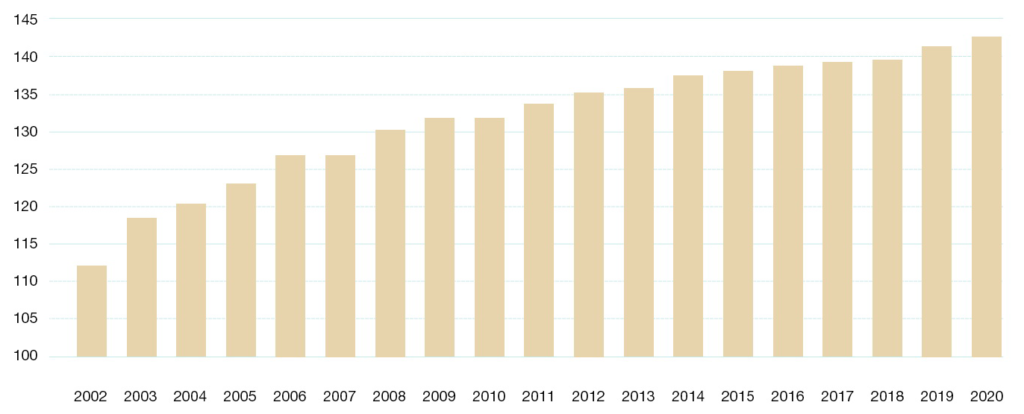What are the main objectives of the HCoC?
The HCoC aims to contribute to the process of strengthening existing national and international security arrangements, disarmament, and non-proliferation objectives and mechanisms through a set of transparency and confidence-building measures (CBMs). Participants recognise a need to prevent and curb the proliferation of ballistic-missile systems capable of delivering weapons of mass destruction, as well as the importance of strengthening, and gaining wider adherence to, multilateral disarmament and non-proliferation mechanisms. To meet these objectives, participants try to exercise maximum possible restraint in the development, testing, and deployment of ballistic missiles capable of carrying weapons of mass destruction (WMD).
What are Subscribing States’ obligations?
The Code is a political commitment that is open to all countries’ voluntary subscription. By signing the HCoC, members voluntarily commit themselves politically to providing pre-launch notifications (PLNs) on ballistic missile and space-launch vehicle launches (SLVs) and test flights. Subscribing States also agree to submit an annual declaration (AD) of their country’s policies on ballistic missiles and space-launch vehicles, including annual information regarding the number and generic class of ballistic missiles and space-launch vehicles launched during the preceding year. Fulfilling these limited commitments does not require significant administrative or financial resources. For States without ballistic missile programmes, the annual declarations are easy to complete and require only the submission of a standard form once a year. For States with ballistic missile programmes, meeting this requirement should take no more than a few hours per month for a diplomat. The HCoC does not require a financial contribution and subscription thus entails no monetary cost.
Where does the HCoC originate from?
In a context of rapid proliferation of ballistic missiles associated with WMD proliferation programmes in the 1990s, the international community expressed the wish to regulate this issue of concern at the multilateral level. Specifically, MTCR partners shared the view that this export regime was limited by its restricted membership and that a new, open and multilateral instrument was needed. The instrument was negotiated in 2002 during two meetings open to all UN members. The text was finally adopted in The Hague in November, with the participation of 93 states.
Is the HCoC endorsed by the United Nations?
The UN General Assembly has adopted six resolutions in support of the HCoC. On 3 December 2004, the UN General Assembly adopted Resolution 59/91, welcoming the adoption of the HCoC and calling on States that are yet to adhere to it to do so. The importance of the Code was then further reaffirmed in UNGA resolutions in 2005, 2008, 2010, 2012, 2014, 2016 and 2018. The latest resolution on the Code (A/RES/75/60) was adopted in December 2020 by a vote of 176 UN member states in favour.
What is the relevance of the HCoC to the Missile Technology Control Regime (MTCR)?
The HCoC complements the ongoing work of the MTCR. All States, whether members of the MTCR or not, are encouraged to join the HCoC, reflecting Subscribing States’ commitment to the universalisation of the Code.
Why is the HCoC not legally binding?
The HCoC was conceived as a non-legally binding measure to increase political support and as a first step in the efforts to regulate ballistic missiles. The creation of a legally binding text on this issue appeared difficult because of the dual-use nature of the technologies involved, and the reluctance of some states to ban completely these weapons.
The HCoC is a programmatic instrument aiming at preventing misunderstandings and pushing its Subscribing States to be vigilant in transfers of technologies related to ballistic missiles.
What have been the evolutions of the Code in 20 years?
In twenty years, the Code has been able to garner the support of an important part of the international community. The number of subscribing states rose from 93 in 2002 to 143 in 2021. The growing support has also been seen in the positive votes in favour of the Code expressed in the vote of UNGA resolutions, which was adopted with a record of 176 votes in favour in 2020, one vote against and 10 abstentions.


HCoC subscribing states – breakdown by region and by year of subscription
Does the HCoC include any verification measures?
The Code is a non-binding, declaratory commitment whose implementation is based on good faith. Nevertheless, implementation is independently monitored by some Subscribing States which occasionally share their findings, while most launches and missile tests are reported in open sources by various organisations.
Does the HCoC cover cruise missiles?
No, cruise missiles are not covered by the HCoC.
Does the HCoC cover cruise hypersonic missiles?
If the hypersonic gliders are launched with a ballistic missile booster, they are covered by the HCoC and states are required to report their development and launch. However, if the hypersonic vehicle is relying on cruise missile technology (scramjet engines), it does not fall within the spectrum of the Code.
Does the HCoC cover antiballistic missiles?
Most subscribing states do not interpret the Code as covering antiballistic interceptor tests.
Does the HCoC cover anti-satellite weapons?
Most subscribing state interpret the Code as covering ASAT weapon tests.
Why does the HCoC cover space launch vehicles as well as ballistic missiles?
A number of technologies used to build missiles and space launch vehicles overlap, such as propellant and propulsion technologies, structural mechanics, etc. These similarities mean that components or skills acquired for developing a space programme could be used for a missile programme. Similarly, space launches and missile tests could be mistaken for one another. There is therefore a necessity to make sure that both launchers are covered by similar CBMs and that states, without putting any constraint on space development, are vigilant about the destination of any part or technology exported for a space programme.